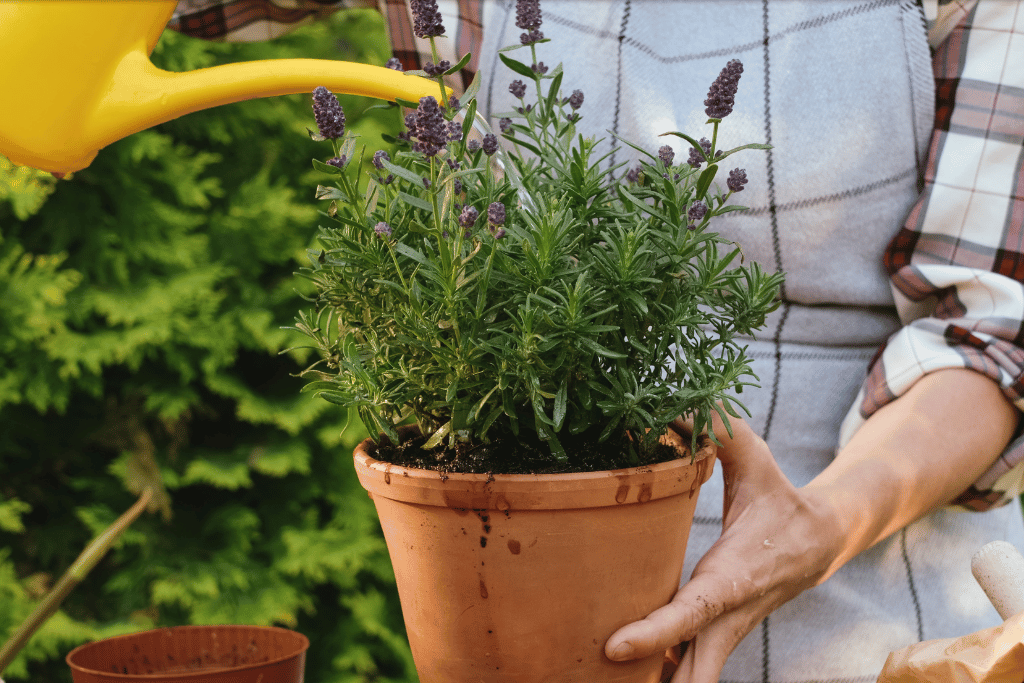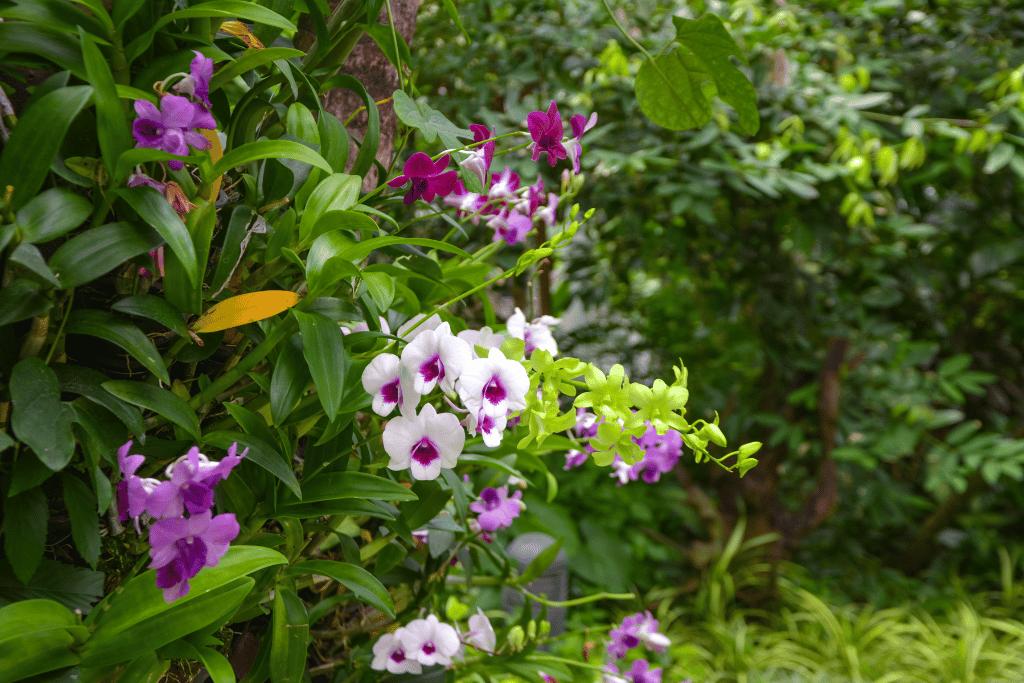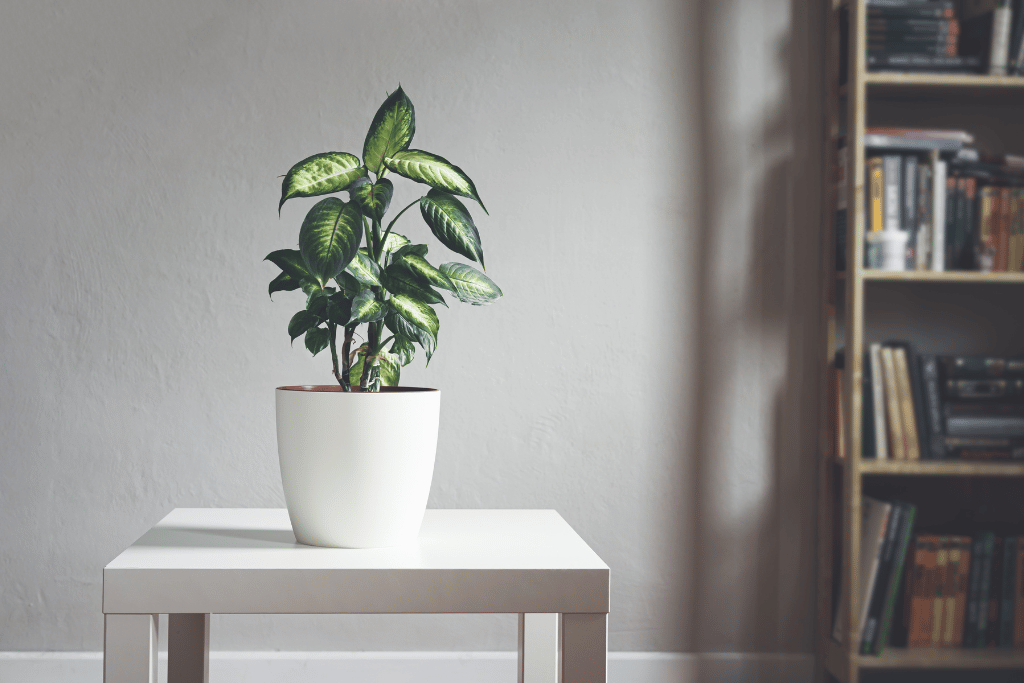
Houseplants are a wonderful way to bring a touch of nature into your living space, and the Dieffenbachia Camille is no exception. With its outstanding looks and beneficial qualities, this plant is a living masterpiece that adds a tropical flair even to the dullest of rooms. But before you embark on introducing this exceptional green to your indoor area, make sure you know everything about its care! Below I’ll fill you in on all the details to help you maintain a thriving plant.
Dieffenbachia Camille Overview
Dieffenbachia Camille (Dieffenbachia seguine ‘Camille’) or more commonly known as Dumb Cane is a delightful and exotic houseplant that will surely captivate your senses! This exquisite species belongs to the Araceae family, a lineage of greens appreciated for their unique beauty and charm.
Originally hailing from the lush tropical rainforests of Central and South America, this greenery displays a truly eye-catching symphony of colors and patterns. Its vibrant, large leaves bear an attractive mix of creamy white at the center, framed by rich, deep verdant shades along the edges. The stunning foliage fans out from its central stem, creating an elegant and dynamic silhouette. To further add to its allure, the Dieffenbachia Camille plant produces a unique flower structure made of a creamy, elongated leaf-like part that wraps around a central spike, which holds multiple tiny, compact flowers.
How big does Dieffenbachia Camille get? Well, it’s a medium-sized leafy green that usually reaches a height of up to 3 to 6 ft (approximately 1-2 meters) when fully mature. Its size makes it the perfect centerpiece in any room, let it be a cozy corner or a grand salon.
Not only is the Dumb Cane a visual treat, but it also has air-purifying properties. Its luscious leaves work tirelessly to filter out common indoor air pollutants, gifting you with cleaner, fresher air to breathe.
However, do exercise caution when handling this magnificent plant, as its sap contains calcium oxalate crystals, which cause irritation if ingested or if it comes into contact with sensitive skin.
Dieffenbachia Camille Care Guide
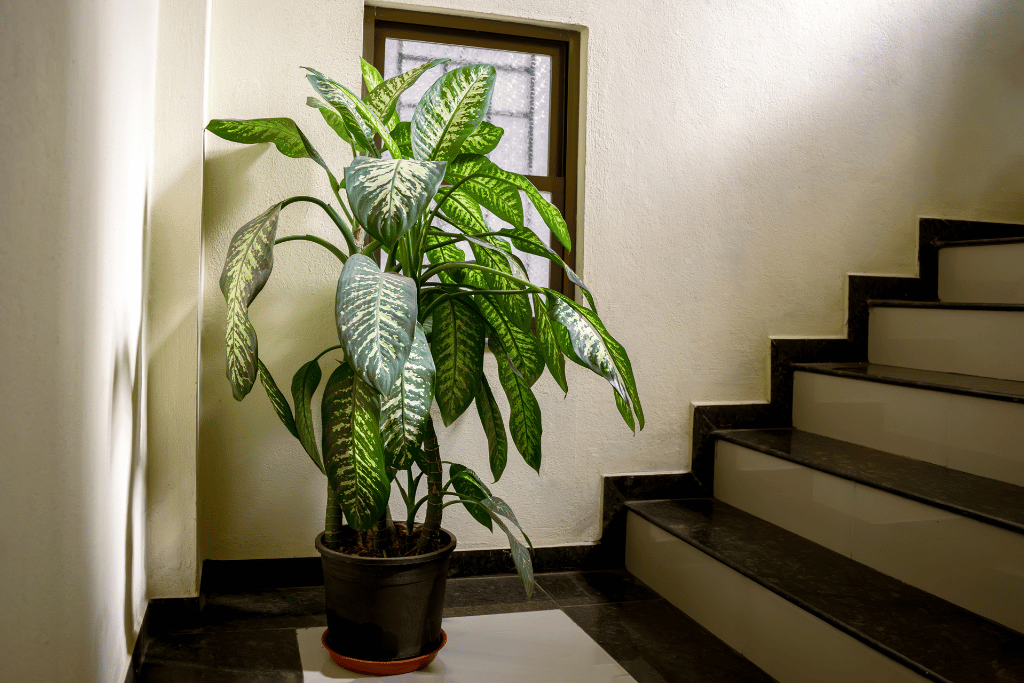
Soil
In order to ensure that the plant sets off on a promising start, provide it with well-draining soil that retains some moisture without becoming soggy. To create the most appropriate blend, mix equal parts of peat moss, perlite, and potting mix. This mixture allows for optimal aeration, drainage, and nutrient retention, giving the roots ample room to sashay without becoming suffocated.
Hydration
The Dieffenbachia Camille watering needs are characterized by consistency and moderation. Only give your precious pot-dweller a drink when the top 1-2 inches of soil have dried out. If you listen to me, you pick a watering can with a narrow spout, which works wonders in targeting the roots while avoiding the foliage. Just like with most other greenery, overwatering potentially leads to root rot, while neglecting hydration causes wilting. Therefore, the general rule of thumb is continuous care for the greenery to maintain its peak form.
Light
The Dumb Cane enjoys basking in bright, indirect light. Picture it lounging in a sun-dappled nook, protected from harsh rays by a sheer curtain. East or west-facing window are ideal, and its moderate light requirements make it an excellent choice for offices without windows. If the foliage receives too much sun, it’ll eventually discolor to a yellow shade and lose all its former vibrancy. However, too little light will stagnate the growth of the plant. So, again, strive to find the sweet spot to sustain the lustrous glow of your leafy companion.
Temperature
Dieffenbachia Camille thrives in temperatures akin to a balmy tropical paradise. Maintaining a temperature range between 65-75°F (18-24°C) keeps it comfortable. Stay aware of the fact that your green pal will start to shiver in continuously cold surroundings below 60°F (15°C), so ensure it stays away from drafts and cold windows. A steady temperature will contribute to the plant’s long and happy life.
Humidity
I’m sure you already guessed from its homeland that the Dumb Cane adores humidity. Therefore, to recreate a steamy rainforest atmosphere, you can use several methods. For one, place a tray filled with water and pebbles beneath the container, allowing the water to dry up and leave a humid microclimate around the houseplant. Alternatively, a humidifier can achieve the same effect. Misting the leaves with water every few days also works, but be mindful of overdoing it, as damp foliage encourages the appearance of pests and diseases. Aim for a humidity level of 50% or higher to make your new leafy friend feel right at home.
Fertilization
The Dieffenbachia Camille appreciates a regular dose of nutrients to support its splendid growth. Feed the green with a balanced, water-soluble fertilizer every 4-6 weeks during the growing season (spring and summer). Opt for a 20-20-20 blend, diluted to half-strength, to give it well-deserved nourishment. Hold off on fertilizing during the winter months though, as this is the plant’s time to rest and rejuvenate.
Dieffenbachia Camille Propagation Steps
- Choose a healthy parent plant: Look for a lively Dieffenbachia Camille plant that has strong stems and leaves and is free from any diseases or pests.
- Select the stem cutting: Pick a suitable stem with at least two or three leaves. The stem should be at least 4-6 inches (10-15 centimeters) long and have a diameter of about 1/4 inch (0.5 centimeters).
- Separate the stem: With the help of a sharp and clean pair of pruning shears or a knife, cut the stem just below a node (the point where a leaf is attached to the stem). Make the cut at a 45-degree angle to maximize the surface area for rooting.
- Prepare the offshoot: Take off the bottom leaves from the stem, so only one or two remain at the top. Dip the cut end of it in rooting hormone powder to encourage rooting (this step is optional).
- Plant the shoot: Fill a small pot with a porous potting mix and create a hole in the center. Insert the stem cutting, ensuring that the bottom is buried in the soil.
- Water the cutting: Hydrate the mix thoroughly and place the container in a warm and bright location, but away from burning sunlight.
- Maintain the offshoot: Keep the soil moist but not waterlogged and mist the leaves regularly to maintain humidity. After a few weeks, the cutting should start to develop roots and new growth.
- Transplant the new plant: Once you’ve got a strong root system, it’s time to transplant the new life into a larger pot or into the ground.
Dieffenbachia Camille Most Common Health Issues
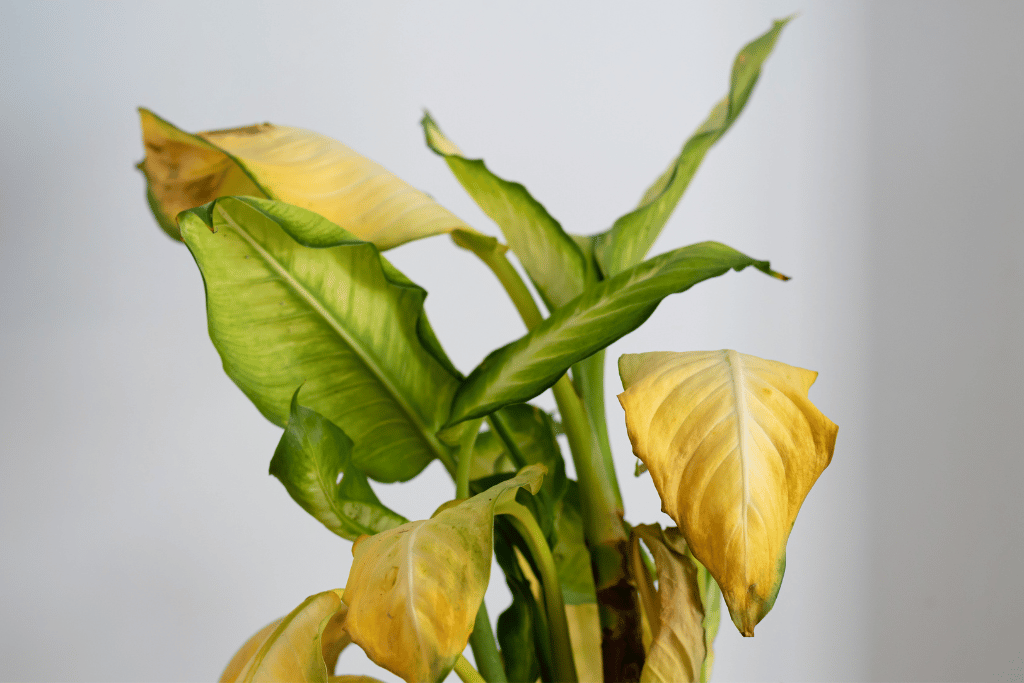
One of the most frequently appearing pests that affect Dieffenbachia Camille is spider mites. These insects are so small that they’re difficult to spot with the naked eye, but they can inflict significant damage to the plant by feeding on its leaves. If left untreated, spider mites bring about the yellowing and wilting of the foliage.
Another pest that may infest the Dumb Cane is mealybugs. These small parasites are covered in a white, waxy substance that makes them easy to find. They target the sap of the plant, leaving discolored and injured leaves behind.
Unfortunately, Dieffenbachia Camille isn’t immune to diseases either. Root rot is one of its number one health problems. This fungal disease is the result of constantly damp soil due to overwatering and leads to the rotting of the root system.
Bacterial leaf spot is another condition this greenery is prone to. It manifests in dark, water-soaked spots on the foliage that eventually leads to the dropping of leaves.
If you want your Dieffenbachia Camille to be a happy camper, you’ll want to give it a cozy home in well-draining soil and go easy on the watering can. Remember to give your plant a good look-over every now and then to catch any pesky critters or sneaky diseases that might try to jeopardize its health.
Final Words
Create a lush environment indoors within seconds with the Dieffenbachia Camille plant! Its mesmerizing blend of colors and patterns will add elegance and tropical flair to the simplest of home designs. Not only does it look stunning, but it also purifies the air, making it a fantastic addition to your house or apartment. Enjoy the wonders of nature from the comfort of your own living room.
Frequently Asked Questions (FAQ)
Does Dieffenbachia Camille like full sun?
Although Dieffenbachia Camille can handle some morning sun, it thrives in filtered light. However, overexposure to direct sunlight can lead to leaf damage, causing wilting and loss of color. To prevent this, it’s recommended to provide partial shade or use a sheer curtain for protection.
How often should I water Dieffenbachia Camille?
Usually, watering your Dieffenbachia Camille once every week or every other week should keep it happy. However, be prepared to adjust hydrating frequency based on factors such as temperature, humidity, and season. Grab the watering can once the top couple inches of soil feel dry to the touch.
Is Dieffenbachia Camille toxic to cats?
Yes, Dieffenbachia Camille is toxic to cats and dogs alike. Its sap contains calcium oxalate crystals that cause mouth and throat irritation, vomiting, and difficulty swallowing if consumed. Keep the plant away from your furry friends or supervise closely.


